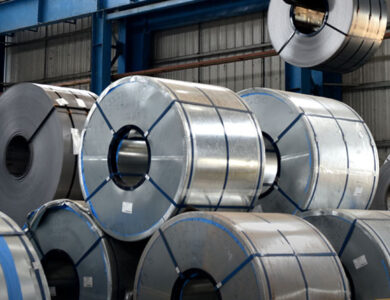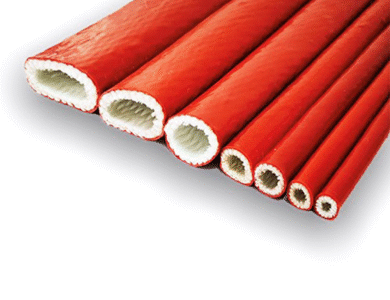Enhancing Indoor Air Quality in Commercial Buildings: Best Practices and Technologies

In today’s rapidly evolving business environment, maintaining optimal indoor air quality (IAQ) in commercial buildings is paramount. A well-regulated IAQ not only contributes to the health and productivity of employees but also ensures compliance with regulatory standards. This article explores best practices and advanced technologies for enhancing indoor air quality in commercial buildings, highlighting the importance of effective Commercial Building IAQ management.
Understanding Indoor Air Quality
Indoor air quality refers to the condition of the air within and around commercial buildings, particularly as it relates to the health and comfort of building occupants. Poor IAQ can result in a range of issues, from minor discomfort to severe health problems, including respiratory conditions, allergies, and headaches. Therefore, managing IAQ effectively is critical for ensuring a safe and productive work environment.
Best Practices for Enhancing IAQ
1. Regular Maintenance of HVAC Systems
Proper maintenance of heating, ventilation, and air conditioning (HVAC) systems is fundamental for sustaining good IAQ. Regular inspections and cleanings of HVAC components, including filters, ducts, and coils, prevent the accumulation of dust, mold, and other contaminants. Scheduled maintenance also ensures that HVAC systems operate efficiently, reducing the risk of indoor air pollution.
2. Effective Ventilation
Ventilation plays a crucial role in maintaining Commercial Building Iaq by ensuring a consistent exchange of indoor and outdoor air. Implementing systems that provide adequate fresh air and remove stale air helps dilute indoor pollutants. Natural ventilation, such as opening windows, can complement mechanical ventilation systems, but it should be carefully managed to prevent energy loss and ensure adequate air quality.
3. Use of Air Purifiers and Cleaners
Air purifiers equipped with HEPA filters can significantly reduce airborne contaminants, including dust, pollen, and bacteria. For commercial buildings, incorporating high-efficiency air cleaners in HVAC systems or standalone units can help manage specific air quality concerns. Air purifiers should be selected based on the size of the space and the types of pollutants present.
4. Controlling Indoor Pollutants
Identifying and controlling sources of indoor pollutants is essential for improving IAQ. This includes managing activities and materials that contribute to air pollution, such as:
- Chemical Emissions: Using low-VOC (volatile organic compound) paints, adhesives, and cleaning products helps minimize the release of harmful chemicals into the air.
- Indoor Plants: While beneficial for adding oxygen, certain plants can also contribute to mold growth. Selecting low-maintenance, non-mold-promoting plants is advisable.
5. Monitoring IAQ
Continuous monitoring of indoor air quality provides real-time data on pollutants and conditions. Advanced IAQ sensors can measure parameters such as particulate matter, CO2 levels, and humidity. Integrating these sensors into building management systems allows for immediate detection and response to poor IAQ conditions.
Advanced Technologies for IAQ Improvement
1. Smart Building Technologies
Smart building technologies enhance IAQ management by integrating various systems and sensors. Building management systems (BMS) that include IAQ monitoring can automatically adjust ventilation rates and HVAC settings based on real-time air quality data. This proactive approach ensures that IAQ is maintained within optimal levels without manual intervention.
2. Energy Recovery Ventilation (ERV) Systems
ERV systems improve IAQ by exchanging stale indoor air with fresh outdoor air while recovering energy from the outgoing air. This technology helps maintain a balance between energy efficiency and air quality, reducing the load on HVAC systems and enhancing overall building comfort.
3. Ultraviolet (UV) Light Systems
UV light systems installed in HVAC systems can help inactivating airborne microorganisms such as bacteria, viruses, and mold spores. UV light treatment enhances air cleanliness and contributes to a healthier indoor environment by reducing the potential for biological contaminants.
4. Advanced Filtration Systems
High-efficiency particulate air (HEPA) filters and activated carbon filters provide advanced filtration capabilities. HEPA filters capture small particles, while activated carbon filters remove gases and odors. Combining these filtration technologies can address a wide range of IAQ issues, improving overall air quality in commercial buildings.
Compliance and Certification
Ensuring compliance with IAQ standards and obtaining relevant certifications can further enhance a building’s IAQ. Certifications such as LEED (Leadership in Energy and Environmental Design) and WELL Building Standard recognize buildings that meet high IAQ standards and promote health and well-being.
Conclusion
Enhancing indoor air quality in commercial buildings is essential for the health and productivity of occupants. By adhering to best practices and leveraging advanced technologies, building managers can effectively manage Commercial Building IAQ. Regular maintenance, effective ventilation, and advanced filtration systems, combined with smart building technologies, contribute to a healthier indoor environment and a more productive workplace. As commercial buildings evolve, ongoing attention to IAQ will remain a critical component of facility management and occupant well-being.



